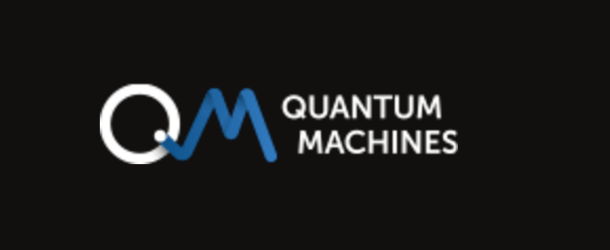Quantum Machines: Chip packaging solutions for realizing useful fault tolerant quantum computers


Chip packaging solutions for realizing useful fault tolerant quantum computers
The realization of practical quantum computers requires the development of comprehensive tools and solutions across all levels of the hardware and software stack. While quantum computing research has traditionally focused on physical qubit systems and high-level gate-based algorithms, chip packaging and signal conditioning around cryogenically operated physical qubit systems have often been neglected. However, as quantum technology progresses from academic labs to commercial applications, packaging becomes a crucial factor that can determine the difference between a quantum computer that functions, and one with practical use..
The impact of effective packaging
Effective packaging plays a crucial role in ensuring optimal performance of quantum processing units (QPUs) and in avoiding disruptive delays. Attaining the highest levels of fidelity in coherent operations requires meticulous optimization of packaging to maintain signal integrity. This is achieved by minimizing return loss and attenuation, eliminating box-mode interference, providing efficient microwave shielding, and safeguarding against magnetic interference. Each of these challenges represents a complex technical endeavor that can easily require over a year to achieve a comprehensive solution.
What’s more, since the general user experience is crucial, packaging should seamlessly integrate into the workflow – from chip fabrication and wire-bonding to device pre-screening and final integration into full stack quantum computers. Overlooking any of these crucial aspects will lead to an unacceptable deterioration in coherent fidelity, resulting in significant setbacks in the development of practical quantum computers.
These challenges necessitate the adoption of a reliable packaging solution like QCage, developed by QDevil, a Danish company. Collaborating with leading scientists in the field, QDevil designed QCage to surpass other homegrown solutions in terms of performance.
QCage offers seamless integration with common workflows and various cryogenic platforms and connectivities. The initial generation, QCage.24, was introduced to the market in early 2022 and targeted the high-fidelity operation of superconducting quantum processors with up to 10 qubits. Quantum Machines, a renowned quantum controller provider, acquired QDevil in mid-2022, incorporating QCage into its product portfolio. In Q1 2023, Quantum Machines released QCage.64, a qubit chip carrier supporting processors with up to 30 qubits.1
Advancing Quantum Research
Since its launch, QCage has gained significant traction among global research and development teams. Prominent figures like Professor Javad Shabani, Director of the Center of Quantum Information Physics at NYU, have praised QCage for seamlessly integrating into their workflows, enhancing throughput, and achieving a nearly 30X increase in the quality factors of superconducting resonators. The Shabani lab experienced substantial improvements in resonator quality factors and observed a strong suppression of quasiparticle poisoning in their hybrid semiconductor/superconductor Josephson junction resonator devices.2
Another success story comes from the Houck Lab at Princeton University, which achieved coherence times exceeding 200 microseconds, equivalent to the best levels previously attained with their transmon qubits.3 Through an extensive study, the lab demonstrated superconducting resonators with unmatched quality factors exceeding 200 million in the high power limit.4 This research confirmed that losses attributed to chip packaging and environmental constraints accounted for only a fraction of the overall relaxation times, amounting to several milliseconds.
Quantum Machines doesn’t consider commercial chip packaging as the final step. Rather, the company seeks to enhance its offering through integration with third-party solutions. The company’s partnership with Bluefors, a world-leading dilution refrigerator provider, grants end-users access to a fully validated system. This collaboration was recently demonstrated using fully calibrated S-parameter measurements performed at millikelvin temperatures.5 Here the measured reflection losses were used to simulate the expected reduction in qubit fidelity to be lower than 10-7.
The QCage Difference
QCage is meticulously designed to securely suspend the chip within the cavity, relying solely on four corner pedestals for support. It is further secured by clamping it down using a signal-carrying printed circuit board (PCB), effectively minimizing losses and decoherence. The PCB features transmission lines (either 24 or 64, depending on the QCage variant) that can be wire-bonded to the chip, while the ground connection is established through direct contact between the PCB and the outermost region of the chip’s front side.
To provide optimal protection, QCage products are entirely enclosed in electromagnetic shielding. The aluminum enclosure exhibits superconducting properties at temperatures below 1K, effectively shielding against background radiation. Additionally, a superconducting magnet coil is placed within this shielding to enable flux biasing. The various parts, including the sample chip, are thermally regulated with beryllium copper bolts to securely fasten the cavity components and mount them to the interface rods. All copper parts, aside from the bolts, are coated with a non-magnetic gold layer to prevent oxidation and ensure efficient electrical and thermal contact. Similarly, the aluminum shielding parts undergo surface passivation to eliminate electrically insulating surfaces.
The field of quantum research and development is rapidly advancing, and forward-thinking companies like Quantum Machines are empowering leading researchers with intelligent solutions that enhance qubit performance and significantly reduce the time required to obtain results.
SPONSORED by Quantum Machines
[1] QCage: Microwave-Cavity Qubit Chip Carrier, https://www.quantum-machines.co/products/qcage/ [2] B. H. Elfeky et al., Quasiparticle dynamics in epitaxial Al-InAs planar Josephson junctions, arXiv:2303.04784 [cond-mat.mes-hall] (2023) [3[ A. P. M. Place et al., New material platform for superconducting transmon qubits with coherence times exceeding 0.3 milliseconds, Nature Communications 12:1779 (2021) [4] K. D. Crowley et al., Disentangling Losses in Tantalum Superconducting Circuits, arXiv:2301.07848 [quant-ph] (2023) [5] S. Simbierowicz et al., Calibrated transmission and reflection from a multi-qubit microwave package, Rev. Sci. Instrum. 94, 054713 (2023); doi: 10.1063/RSI.5.0144840

























